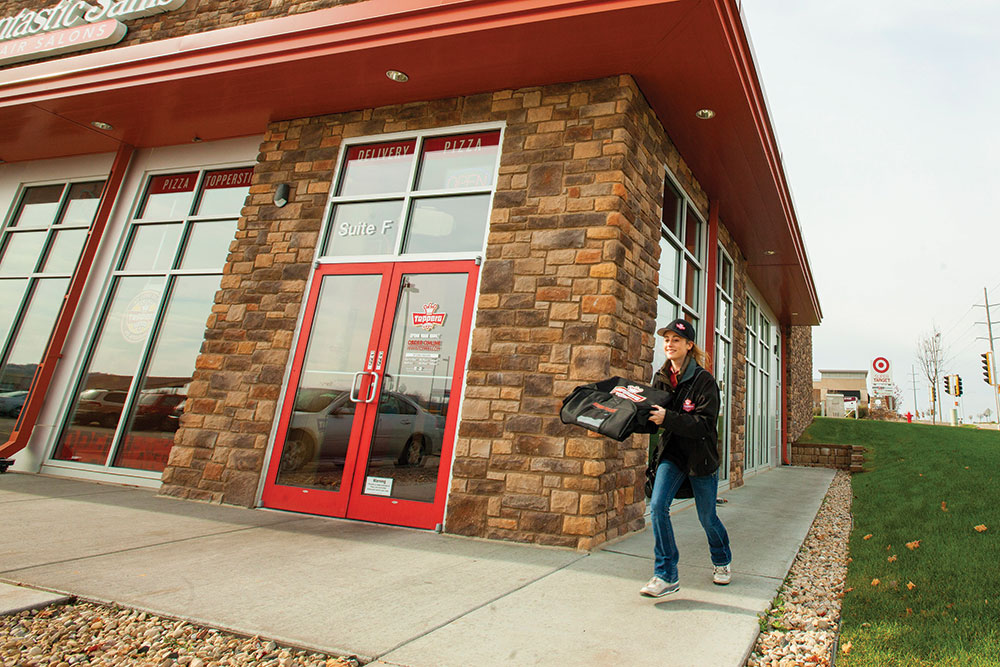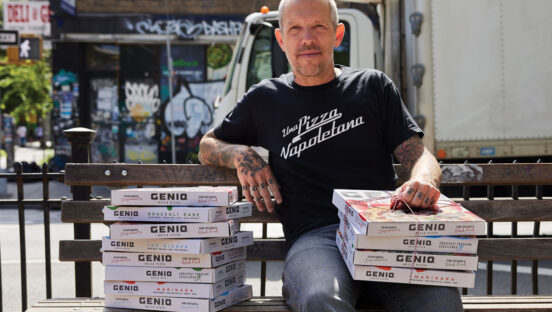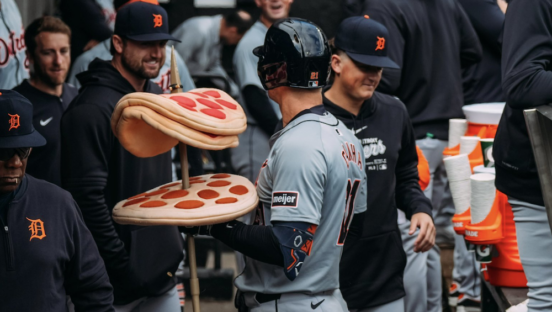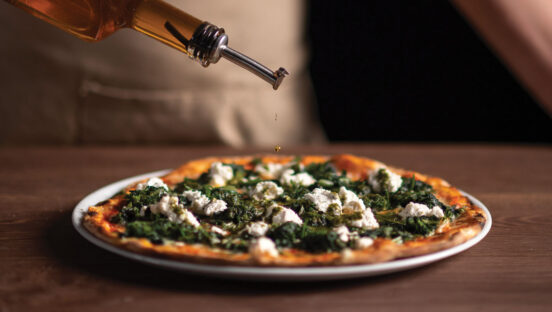Pizza and delivery have gone hand in hand for decades, and today more than 1 billion pizzas are delivered each year. But consumers—and delivery innovations—have come a long way over the years. When your customers order delivery, they expect a great experience: orders that are hot, fresh, fast and accurate. And if you want them to order again, you must go the extra mile to ensure that all of these needs—and maybe a few extras—are met. Here, operators share their secrets for delivering the goods.
POS Power.
Mark Watt, franchise operations director for Whitewater, Wisconsin-based Toppers Pizza (toppers.com), with nearly 60 locations, calls a POS system “the brain that runs the store,” helping ensure smooth processing, accuracy and delivery for outgoing orders. But some brains are better than others. “Some POS systems don’t have the ability to track addresses and do dispatches, while others offer integrated mapping software and can track and store orders for priority—so as the order becomes older, it becomes higher priority,” he explains. The better POS systems, he adds, “can also store orders and offer the ability to assign multiple runs from the route station.”
POS systems can also store necessary information about the customer, including phone number, address, previous orders, notes on their dislikes, and delivery instructions, notes Dupree Brar, owner of A Slice of Italy (mysliceofitaly.com) in Bakersfield, California. “A good POS system provides ease of use for the employee, who can simply ask if the customer wants the same past order,” Brar says. “This helps with speed, especially during busy times; customers don’t want to be kept on hold too long.”
Finally, a POS system can help ensure timely deliveries. “POS systems are essential to providing great delivery service because they help reduce the amount of time drivers spend in the store between deliveries,” says Al Newman, director of training at Hungry Howie’s Pizza (hungryhowies.com), based in Madison Heights, Michigan, with almost 600 locations. “Our out-the-door time goals are monitored for each order on the driver dispatch before leaving the store. Elapsed times appear in green, yellow or red, depending on how old the order is.” Newman adds that POS systems can also assist with order completeness, enforce cash drops and accommodate notes for specific requests.
Even so, Watt knows better than to rely too heavily on computerized systems. While his POS system can physically route delivery orders, he finds that, like with any GPS system, maps can be faulty. He prefers having employees route the orders and determine which orders should be sent out together, which simply requires knowledge of the delivery area.
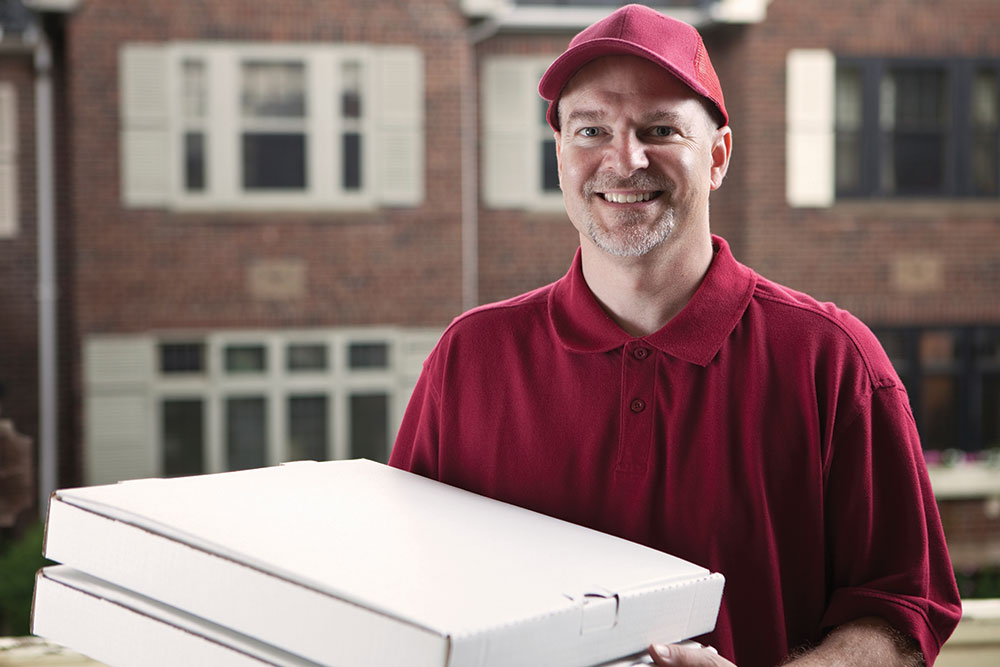 |
|
Delivery drivers serve as ambassadors for your pizzeria, so hiring the right person—with the right personality—is crucial. |
A Driving Force.
Delivery drivers are brand ambassadors for your pizzeria. If they show up at your customer’s door with a bad attitude or slovenly appearance, the customer experience (and your delivery sales) will be negatively affected. Hence, Brar believes that the hiring process is critical for finding great drivers; he makes sure the applicant is outgoing and able to present the company in a positive light. And he trains them to understand that knowing the customers and going that extra mile benefits not only the business, but the drivers themselves, since they rely on tips and can pick up extra hours if they excel. “You want to monitor drivers so they’re not making unnecessary stops or wasting time,” Brar says. “A lot of our customers will actually request a certain driver. For example, one of our customers is disabled and wants his food put on the table and his drink poured, and our drivers will do that. When you work on a more personal basis, the driver treats the customer as his own client, not just the pizzeria’s client.”
Similarly, Toppers selects drivers—and all team members—based on personality, seeking employees that believe in building connections with customers. “Pizza is a party in a box, and our delivery drivers are bringing the party, so we look for an outgoing, cheerful person,” Watts explains. “One of our core values is to have fun, so we choose people who truly want to be in this business, not just those who need a job.” As an added touch, Toppers trains its drivers to jog to the customer’s door, letting them see the hustle to deliver their food quickly. They even carry messenger bags with little extras, including paper plates, napkins, and Parmesan and red pepper packets, and they ask the customer if he needs any of them with his meal. “Customers can forget to ask for these, and extra condiments enhance the order,” Watt says. “People staying in hotels especially appreciate that we bring paper plates!”
Trevor Leppek, co-owner and operator of Noble Pie Parlor (noblepieparlor.com) in Reno, Nevada, and his partner will often make deliveries themselves, and they always put a personal stamp on the transaction. “You have to be prompt, quick and friendly, but you also have to provide great customer service—not just say, ‘Here’s your pizza,’” Leppek notes. “We’ll shake hands with our customers, genuinely thank them for their business and say we hope to see them again soon.”
Newman agrees that delivery drivers must show up at customers’ doors with a friendly demeanor. “Regardless of what position you’re hiring for, a great personality is always priority No. 1; it’s imperative that the personality fits the culture you’ve created in the store,” he says. “It sounds simple, but I always look for a candidate with a great smile. You can teach skills, but not personality.” Newman also believes it’s crucial to collect motor vehicle records from all new hires; check these on a biannual basis, and develop criteria for violations such as points, accidents and more serious issues such as license suspensions. “Define and communicate the non-negotiables, not just at time of hire, but on a regular basis,” Newman advises. “Brutally defend and enforce your policies, and always lead by example.”
Revving Up Sales.
If your delivery drivers aren’t sporting car toppers, you’re missing out on a prime advertising opportunity. Newman points out that car toppers are extremely effective for both generating new customers and creating repeat business, especially when they’re lit at night—yet many pizza companies miss out on this no-brainer. “They’re a simple way to gain an edge on your competitors,” he notes.
Brar’s pizzeria has grown at a rapid pace since opening nearly four years ago, and with 11 drivers, he doesn’t have the room to store car toppers. He’s looking to expand his location and intends to purchase car toppers as well as logoed company cars. Meanwhile, Toppers’ drivers use car toppers on every delivery car, every day. “It’s a rolling billboard,” says Watt. “If you don’t use car toppers, you lose the opportunity to tell people that you deliver to their neighborhood.”
At Noble Pie Parlor, cars are emblazoned with a car topper alternative—magnets. “People see the magnets and know we deliver there,” Leppek says. “And if the car is parked, they can write down our phone number. It’s free advertising!”
Marketing Maneuvers.
With each delivery, the customer can receive your branding message and information on your specials or menu, and even get a peek at your personality—all through your pizza box and smartly designed box toppers. At Toppers, custom-designed boxes tell the story of the pizzeria, touting fresh-baked dough and online ordering, and come with fliers promoting current specials. But there are also fun elements, such as a section on the box designed for the pizza maker to write a personal message. There’s a spot for the “double-check stamp,” which tells the customer that the order has been checked twice for accuracy. “Our box is covered with brand touchpoints, but we also want to ensure that the customer’s order is correct, every time,” Watt says. “Sometimes we’ll also do menu magnets, especially in college markets, where a new batch of students comes in every year.” Of course, Toppers actively uses social media to market its delivery option, which has paid off with nearly 70,000 likes on Facebook and almost 5,000 Twitter followers.
Leppek, who owns a single operation, doesn’t have the budget for custom-printed boxes, so he found a more economical branding solution. “I had a stamp custom-made with my logo, and we stamp our plain white boxes with it,” he says. “The stamp also includes our phone number, Facebook and website. People see the boxes at houses or even in dumpsters, and it advertises for us with a cool vintage look.” The logo itself says “We Deliver” in the corner, so everywhere the logo is printed (including on T-shirts given away at weekly events), customers are informed that delivery is available. All print advertising mentions Noble Pie’s delivery, too, and the pizzeria finds a lot of business through Yelp, since the Yelp app allows customers to look for nearby restaurants that deliver (simply note this on your profile). Social media has also driven delivery, especially a savvy promotion advertised through these channels: If it’s raining or snowing, Noble Pie drops the delivery charge. “This helps boost sales on days when we might not get as much traffic in the restaurant,” Leppek says.
At A Slice of Italy, Brar also eschews custom-made boxes and instead opts for box toppers, which he believes offer a bigger return for less investment. “We can change these frequently and can get a lot more information on them, especially about our online ordering, which is the No. 1 thing we’re pushing now—it’s plastered back and front on those fliers,” he says. “We always include our phone number, address, coupons and menu.” He also broadcasts the fact that his pizzeria delivers wine and beer, which attracts extra business (liquor cannot exceed more than 50% of the total order, so customers must also order food).
Both old-school and new-school advertising help Brar attract delivery orders. He’s a regular on Facebook and does a lot of Yelp advertising so that his business shows up when anyone in his area searches for restaurants. “We spend $1,000 a month on Yelp, but it’s very effective,” he says. “We’re also involved with Google AdWords. We’re a small business, but we still have to compete with the big boys, and we want to attract the 25-to-45-year-old market.” In addition, fliers that promote delivery are regularly printed—25,000 every two weeks—which has helped contribute to month-over-month growth since the business opened.
A Little Extra.
When it comes to deliveries, do sweat the small stuff—from selecting quality hot bags to separating hot and cold items to monitoring drivers’ habits. “Monitor driver vehicle condition, and establish policies to ensure driver safety, hot bag use, driving directly to the house and back, limiting the number of orders per run, and what to do when the driver approaches the house (i.e., music volume, where to park and what to say at the front door),” Newman recommends. “Always communicate that time is always saved in the store, never on the road.”
At Noble Pie Parlor, delivery range is kept to 2 miles or less to offset labor and gas costs while maximizing food integrity, and drivers don’t take out more than two deliveries at a time. “When you put pizza in a box or bag for 10 minutes or more, it’s not going to be as good, so it’s a matter of educating customers,” says Leppek. “We keep our delivery range smaller so we can provide great service to those who are in our range.” Leppek also notes that he instructs order takers to ensure fast delivery by asking for details: Is it a business or residence? Is there an apartment number? Do you need plastic utensils? “I tell employees to get more information than they think they need,” he says. “And you have to make sure the order is right, which requires communication among staff and double-checking everything.”
Finally, don’t forget the power of presentation. Brar believes that today’s consumer, accustomed to drooling over delectable food photos and dishes prepared on TV cooking shows, expects food to look as good as it tastes. Now, he spends more for clear dome lids on pasta dishes to improve food visibility. If an item gets tipped over and leaks in transit, he’ll deliver the order with an apology and send out a replacement for free. If an order is incorrect, he’ll offer a free dessert or a discount on the next order—anything to make the customer happy. “With delivery, you have to look at everything together: good service and making the customer feel he’s wanted, food quality, presentation, driver,” Brar says. “We want to make sure the customer loves the whole experience. That’s what will make him call again.”



